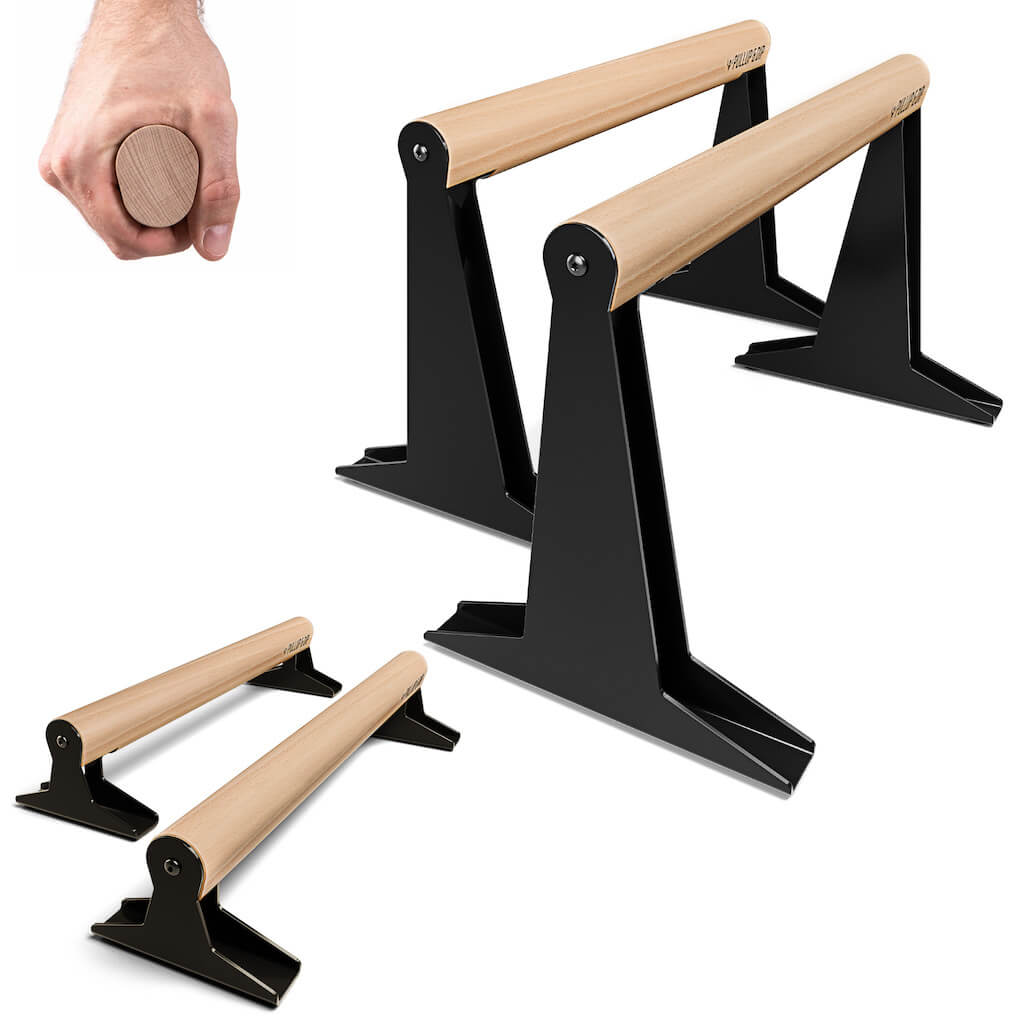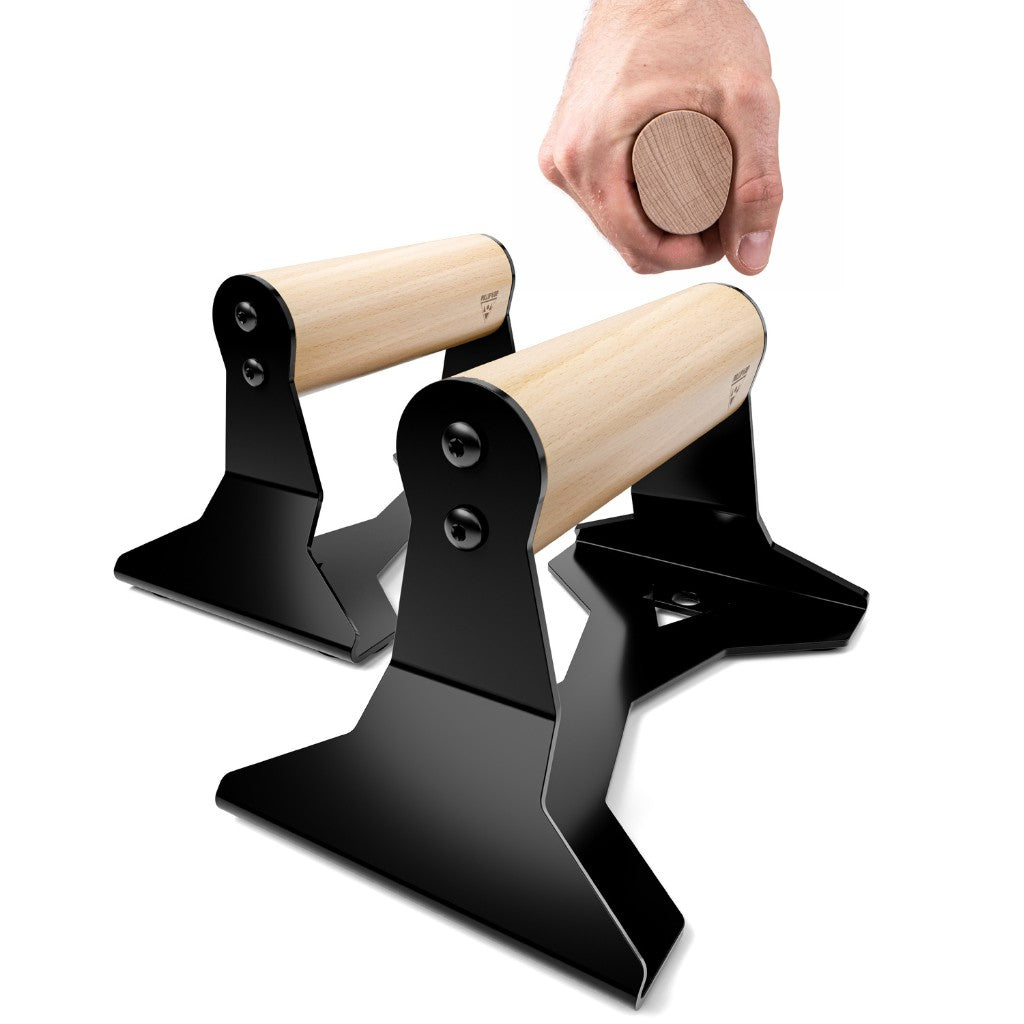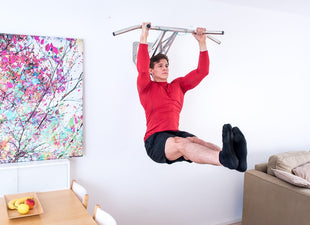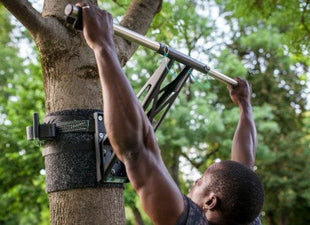The handstand is one of the best-known bodyweight skills that can be done without any equipment, and at the same time, it the most impressive of them all. Whether its yoga, acrobatics or calisthenics, the handstand plays an important role in all kinds of sports. There is even a separate sport in which one does nothing but handstands – so-called hand balancing.
We have summarised the most important points for you in this article, so that you can learn to do a handstand too. Here, you can find out:
- The advantages of the handstand
- How long it takes to learn to do a handstand
- Tips: The perfect preparation for a handstand
- How do I learn to do a handstand? Which exercises make sense?
- The handstand on the hands vs. parallettes
- The two worst mistakes when learning to do a handstand
The advantages of a handstand

The handstand brings many advantages with it. We will tell you about the Top 8 Advantages in this article. If you are particularly interested in a specific point, you are welcome to click on our handstand benefits article, because we have compiled a comprehensive blog article especially for you, in which we explain all the advantages of the handstand in great detail.
#1 – Less stress and a happy life
#2 – Handstands for a feeling of well-being – a booster
#3 – Handstands increase your strength and raise your level of self-confidence
#4 – Health and vitality, even in old age
#5 – The handstand strengthens the entire body
#6 – Optimisation of the absorption of nutrients
#7 – A refuge from a whole day of sitting
#8 – You do not need to worry about a contract at the gym
“How long does it take to learn to do a handstand?”

“How long will it take until I can do a handstand?” You hear this question a lot when you talk to people about this subject. But, it is a very difficult question to answer, because there is no single answer. “THAT DEPENDS...” is the most common answer.
When learning to do a handstand, you need to pay a lot of attention to intelligent training. Learning to do a handstand can be compared to the kind of power training you do when you want to increase your strength. When learning to do a handstand, you need to practice very frequently, in order to learn the skill effectively. The best example is that of a baby who is just learning to walk. He stands up a thousand times, and falls down again just as often, but eventually, he develops the coordination and the strength he needs to take his first steps. If you want to learn to do a handstand, you also need time and patience, because you cannot expect to support your full bodyweight on your hands, rather than your feet, overnight. You ligaments, tendons and joints must first get accustomed to this new burden, so you need to give your body the time it needs, and not try to force anything, because that is very likely to lead to injuries that will set you back, rather than helping you to move ahead.
Tips: The perfect preparation for a handstand
The handstand is a very demanding exercise, because there are various aspects that play a role. It is important to gain enough strength and stability in your wrists, and to master your overhead mobility, body tension and mind-muscle connection, if you want to master the handstand. You can begin working on the first three points right away, because you do not have to be able to do a handstand to get stronger and better at it.
Let us begin with the wrists. They are often the main problem for beginners who are just starting to learn to do a handstand. Due to the extreme strain, it is not long before the wrist pains begin. There are many reasons why, but the main cause is that the wrists and lower arms are too weak. By doing the following two exercises, you can strengthen and mobilise your wrists and lower arms.
WRIST EXERCISE 1:
Start by kneeling down with the palms of your hands flat on the ground, and your fingers pointing away from you. Now, lift your palms, keeping your fingers on the ground. You basically press your fingers into the ground as hard as you can, so that your palms lift off the ground. Raise the palms of your hands as high as possible, and then lower them again slowly, so that your entire hand is flat on the ground again. Keep your arms fully stretched for the full duration of the exercise. You can vary the intensity by placing your shoulders directly over your wrists (which makes it harder) or moving your shoulders backwards (which makes it easier). We recommend the second option for beginners, until the body has become accustomed to it.
WRIST EXERCISE 2:

You begin on all-fours again, but with the back of the hands on the ground. The fingers are facing each other (inwards). The arms are fully stretched, and the biceps are turned to the front. In this position, you can also vary the intensity by moving the shoulders further forward (harder) or further back (easier). As soon as your hands are used to this position, start rolling your fingers inwards to form a fist. It is extremely important that you keep your arms fully stretched throughout the exercise. To begin with, you probably won’t be able to form a proper fist. So, don’t worry! That is quite normal, and it will get better with time, because your mobility will improve.
There are various exercises you can do to improve your overhead mobility. One of them is the bridge. This is a fantastic exercise with which you can open up your shoulders, thereby improving your overhead mobility.

How do I learn to do a handstand?
These exercises will give you a solid basis for your handstand, so that we can start with the actual handstand training. Basically, there are many ways you could learn to do a handstand, but we are going to teach you a method that works for many people, although there are many other options. You simply need to try it out, and find the way that works best for you.

Begin in the push-up position, and “walk” your legs slowly and controlled up the wall, bringing your hands closer and closer to the wall, until they are approx. 5-10 cm from it. Tense your tummy and your buttocks and push up with the shoulders as hard as you can (to raise your head from the floor). Your hands should be placed firmly on the floor, as far apart as your shoulders, and only your toes should be in contact with the wall. As soon as you can hold this position for 15-20 seconds, you are ready to progress to the next step.

If you have a training buddy, you can do the exercise together. You swing up into a handstand and he/she catches your legs and draws you into the right position. This exercise is a bit more effective, because you go directly into a free handstand, and you get the feeling and coordination you need. As soon as you find that you are no longer having any problems, you can swing up into your handstand alone, without your training buddy or the wall.
Learning to do a handstand on the hands vs. on parallettes

Learning to do a handstand on the hands or on parallettes – what are the differences?
Basically, we recommend that you learn to do a handstand on your hands, so that they can become used to the burden. The advantage of parallettes or pull-up bars, is that your wrist remains in a neutral position, and you also have more space to balance out your weight. But ideally, you should practice both.
The two worst mistakes in handstand training

To round off this article, we are going to have a look at the two most common mistakes people make when trying to learn to do handstand.
Mistake Number 1 is a lack of patience when practicing. Most people do not have enough patience, and they want to learn to do a handstand overnight, so they put too much strain on themselves, and often the training is too intensive. Your ligaments, tendons and joints need time to get used to the load. If you do not give your body the time it needs to regenerate, you will injure yourself sooner or later, and that will set you back considerably. The best way is to start by practicing your handstand 3-4 times a week, for 10-20 minutes at a time. As soon as you can do it with ease, you can increase the frequency.
Mistake Number 2 is a lack of shoulder mobility. Most people are unable to put their arms over their heads without hollowing the back. That is a very big problem when learning to do a handstand, otherwise you will not be able to get into a straight handstand position. So, work on your overhead mobility – it will really pay off.
We wish you every success for your handstand training and superb handstands in the future!
Are you looking for the perfect Calisthenics equipment to start out? We at Pullup & Dip offer you various high-quality Calisthenics equipment. Go check it out now!
 Other Equipment
Other Equipment
 Gripping Aids
Gripping Aids
 Bandages
Bandages
 Tapes
Tapes












